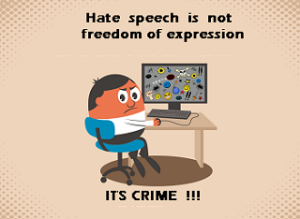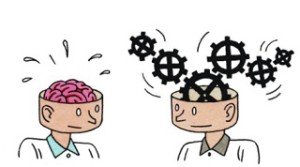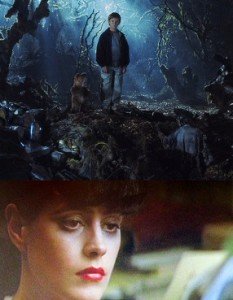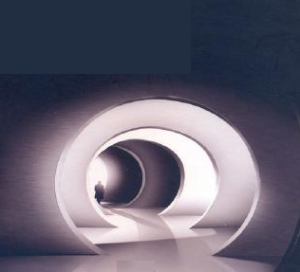
Arquivo para October, 2017
AI can detect hate speech
It is growing in the social media hate speech, identifying it with a single source can be dangerous and biased, because of this, researchers from Finland trained a learning algorithm to identify the discourse of hate by comparing it computationally with what differentiates the text which includes discourse in a system of categorization as “hateful.”
can be dangerous and biased, because of this, researchers from Finland trained a learning algorithm to identify the discourse of hate by comparing it computationally with what differentiates the text which includes discourse in a system of categorization as “hateful.”
The researchers used the algorithm daily to visualize all the open content that candidates in municipal elections generated on both Facebook and Twitter.
The algorithm was taught using thousands of messages, which were cross-checked to confirm the scientific validity, according to Salla-Maaria Laaksonen of the University of Helsinki: “When categorizing messages, the researcher must take a position on language and context and therefore it is important that several people participate in the interpretation of the didactic material “, for example, make a hateful speech to defend themselves from an odious action.
The algorithm was taught using thousands of messages, which were cross-checked to confirm scientific validity, explains Salla-Maaria: “When categorizing messages, the researcher must take a position on language and context and therefore it is important that several people participate in the interpretation of the didactic material “, otherwise the hatred can be identified only unilaterally.
She says social media services and platforms can identify hate speech if they choose, and thus influence the activities of Internet users. “there is no other way to extend it to the level of individual citizens,” says Laaksonen, that is, they are semi-automatic because they predict human interaction in categorization.
The full article can be read on the website of Aalto University of Helsinki.
(Português) Complexidade, consciência e AI
Complexity, consciousness and AI We have already stated that both  complexity and consciousness are phenomena that belong to the biological nature, but AI (artificial intelligence) continues to have advances, what would be the misconceptions of mistaken notions in this field?
complexity and consciousness are phenomena that belong to the biological nature, but AI (artificial intelligence) continues to have advances, what would be the misconceptions of mistaken notions in this field?
The response of MIT technology professor Rodney Brooks, who works with robotics for Panasonic, is that there are seven deadly sins, and he cites Amara’s law by saying that people tend to underestimate both the short-term and the short-term effect. long-term technology while examining a nonexistent technology, while another is confusing hypotheses where the AI would have an equal competence to solve the problem of a nonexistent technology.
A third factor pointed out by Brooks is that the assumption often of practicing a task is often confused with a task performed by AI equal to competence.
Brooks also says that people are prone to parallel AI progress in learning a given task for the same process in humans, so it always comes up with the idea of human hybrids / machines.
Brooks also asserts that people should not expect AI to continue to make steady progress on an exponential path, but rather on adjustments and reevaluations, and we should not believe in media scenarios with unexpected AI scenarios.
This is the science fiction of Odyssey 2001, where the computer that made diabolic decisions never existed and watch the movie today shows the unreality of that fiction, Blade Runner was updated in 2049 and asks if machines have souls, the writer’s question that inspired the film is whether machines dream of electric sheep (in Philip K. Dick’s novel, and why machines would sleep? and why would machines sleep?
Incidentally the figure of the dog of the old Andromeda songwriter, also calling Harrison Ford for the role was interesting in reference to the novel that inspired the film.
The full article by Rooney Brooks published in Technology Review´s last week is quite interesting and separates 7 fallacies about AI.
The Beauty and pain of the Samaritan
The Korean-german a philosopher Byung-Chul Han claims the wound in Belo’s participation, nothing more significant than Michelangelo’s The Pieta, an Italian economist denounces in his book “The Sore of the Other”, trying to establish as interpersonal relations are a source of joy and “blessing” to man, but we could say of beauty as well.
in Belo’s participation, nothing more significant than Michelangelo’s The Pieta, an Italian economist denounces in his book “The Sore of the Other”, trying to establish as interpersonal relations are a source of joy and “blessing” to man, but we could say of beauty as well.
Beauty is situated in reciprocity, and it is not a question of returning the “value” according to what has been paid, the society where the measure is only a mathematical value, “wound” and “blessing” are two inexplicable poles, which characterize interpersonal relationships and are also a source of happiness, joy and beauty for man, but do not fail to pass through “pain.”
The word wound, in other languages it’s like having a bruise, en english is interesting because wonderfull is wounderful, well we could create the word wounderfull, for the beyond-wounded of the other, and is a sense of word the economist Luigino Bruni.
A child who is born is a pain, the pains of childbirth, the culture of the polite and immunology, Sloterdijk’s term that is also used by Chul Han, are unrealities that can lead to an irrational pain, indifference and pain contempt for the painful and excluded. It is not enough to give a “medal” to the heroine teacher who fought to the death to save the children, it is necessary that the culture, the beautiful and the economicist ideology value the relations, affection and appreciation for those who suffer turning their backs on suffering, the principle of invisible of one person.
The biblical parable of the Samaritan (good is a euphemism to say that the Samaritans were evil) there was a man wounded on a road passed several people, including priests and went on ahead, the Samaritan that we can say a “common” type stopped and bailed him out, he was neither a religious nor a philanthropist.
Is possible in this sense Maria is a samaritan that suffer with Jesus in Pietá.
I call this parable with another in which the king prepared a feast and the guests did not come, the banquet of Plato and the table of various liturgies and cosmologies are references to the relationship between the men, instead of the guests the king ordered that they were the “peripheries “And invite the common people to come to the banquet (Mt 22,1-14.
It is not prepared for the true banquet that those who move away from the pain, create the polished and immunological environment, where those who suffer and who are excluded do not participate, the true feast is that of which fought with sacrifices and solidarity for all to participate.
BRUNI, La ferita dell’altro. Economia e relazioni umane, Il Margine, Trento 2007
The woman dressed in sunshine
A woman clothed with the sun is one of the first tragedies in the Northeast, written by Ariano Suassuna in the 47s, and later also wrote the Auto da Compadecida (1955), both of which are allusions to both the biblical woman mother of Jesus and also the woman which is described in the Apocalypse.
written by Ariano Suassuna in the 47s, and later also wrote the Auto da Compadecida (1955), both of which are allusions to both the biblical woman mother of Jesus and also the woman which is described in the Apocalypse.
According to Suassuna, Uma Mulher Decida do Sol (Picture A Woman Dressed in the Sun in the promotional image of the 1994 film), her intention was to recreate the popular Northeastern romance novel.
With remarkable skill he was able to connect the existing Brazilian serf and the lands of Spain, a dialogue between the erudite and the popular, between the Iberian novel and the Northeastern.
As he affirmed the author treated dramatically, uniting his poetry, daughter of the northeastern novelist the tradition of the Iberian. I tried to keep in my play what.
There is in his work I think something eternal, universal, poetic in our rich songbook where you can also find masterpieces of epic poetry, in the phase called grazing.
The brazilian Northeastern tragedy kept a sign of the pains “pitied” with our typical comic.
One of her scholars, Hermilo Borba Filho, with whom Suassuna founded the Brazilian Popular Theater of the Northeast in 1959, states that the Puritan character of the first version, when Suassuna was still a Protestant, was diluted and the play gained an atmosphere of love and comparable violence to the elements of the Iberian novel, where: blood, honor, family, incest, are placed in the exact dramatic measures.
It follows the classic tradition when playing, within the tragic atmosphere, but it joins a type of comedy typical of the Brazilian northeast, for example, where the Bachelor Orlando de Almeida Sapo and the Delegate of Police, border the ridiculous and the grotesque, while there are other characters with “nobler” characteristics.
The Auto da Compadecida, refers to Senhora Aparecida, whose appearance of the image is celebrated 300 years, for those who do not believe it should be remembered that it is in popular culture with deep roots, and that is part of the Brazilian as Macunaíma, Quincas Watercress or Dom Casmurro.
We find in the Bible the passage of the woman clothed in the Sun: “There was a great sign in heaven, a woman clothed with the sun with the moon under her feet, and a crown of twelve stars on her head; pregnant, cries out in labor pains, suffering torments to give birth. ” (Rev, 12, 1-2).
The salvation of the Beautiful
I read the Spanish version of another good book by the Korean-German  Byung-Chul Han, undoubtedly an urgent theme in times of ugliness and a certain confusion between art and bad taste.
Byung-Chul Han, undoubtedly an urgent theme in times of ugliness and a certain confusion between art and bad taste.
He comments on works by Jeff Koon, who calls himself soteriologic, because he promises a redemption different from Christian redemption, but hewn from positivity to hedonism, the positivity he calls the “polished world” (page 16), giving the example of the sculptor Balloon Venus, among others.
To understand what positivity is, the author exemplifies the work of Andy Wharol that even if he declared himself in favor of a “beautiful and satiny” surface (page 14), his work is not without negativity, for example, in “Death and disaster”.
He comments through Roland Barthes (the work cited is Mitology) reminiscent of the tactile model of the car Citröen, which also recalls the interactivity of the media, but seeks to emphasize that the tactile is the most demystifying of the senses, while the vision is the most “magical” “.
He comments that by calling “Baptism” an exposition that contrasts with Christian culture, Jeff Koons work exerts a sacralization of the read and impeccable “(page 17), and although it sounds” new “it is idealistic and seeks to hide the “wound,” which is essential for art, according to Gadamer, as quoted by Chul Han, from which the call to “change life” arises (page 17).
The author affirms “today the polished is not only turned to the beautiful, but also the ugly” (page 19).
On the difference between eroticism and hedonism, the author resorts to the work of G. Baittaile “eroticism”, where he realized that the ugly is the dissolution of limits and release, remember that the author has a specific work on the subject: “The agony of eros”.
Idealist perfectionism is seemingly pacifying and “beautiful,” but it is conservative because it fails to point out what can and should be changed, it is the “wound” that saves art.
HAN, Byung-Chul. La salvación de lo bello. The salvation of the beautiful. Barcelona: Herder Editorial, 2015
Complexity, consciousness and machines
Both complexity and consciousness are phenomena that belong to the biological nature, as Searle asserts, “it is an objective fact of the world to have certain systems – the brains – which are provided with subjective mental states, and physical systems of similar systems have traits mental “, so the infernal dichotomy between culture and nature is so capital in the liberal-idealist model.
nature, as Searle asserts, “it is an objective fact of the world to have certain systems – the brains – which are provided with subjective mental states, and physical systems of similar systems have traits mental “, so the infernal dichotomy between culture and nature is so capital in the liberal-idealist model.
This brings Searle closer to intentionality, the capital category of Franz Brentano and intermediary of Husserl’s phenomenology, but it is an “intentionality” defined as “the fundamental biological capacity of the spirit to put the organism in relation to the world,” and even if it is ” placed “on machines, they lack this subjectivity of the spirit.
It is different when we speak of intentional acts as acts of language, a phrase or even sounds that can come out of the mouth being recorded or marked on a sheet of paper, is a physical object at the origin as another, but as long as the ability to represent something is no longer intrinsic, for example, if it is a feeling, a belief, or a desire.
Intentionality in the machine exists only as a state, act or action, never as feeling, desire or belief, it is inherent in it that one state leads to another, even if it is a state of rest, but never that of feeling, if it exists it is simulated.
The author writes that “the ability of language acts to represent objects and states of affairs in the world is an extension of the biologically more fundamental capacities of the mind (or brain) to put the organism in relation with the world through mental states such as belief or desire, and in particular through action and perception. ”
The idea that this may be objective and will simply be a machinic act is as strange as digestion or tasting, it is not the difficulty of imitating these senses by machines, perhaps one day it is possible, but the fact that even though they do what biologically a person does will be a chemical-physical and never a mental act.
They can be done until the machines dream like in Blade Runner, or teach “love” as in A.I. (directed by Spielberg, 2001), it will still be a cybernetic and not a mental state.
In next week we explore complexity, it also has a biological origin.
.
Androids hunter is replicating
The replicant means a machine with humanoid features and in few things besides the feature approaches the human, in the case of Blade Runner androids 2049, the eye or rather the bottom of the iris that has an orange tone is the great differential, but being a machine has characteristics that are superhuman, for example, strength, speed and many other characteristics may be human, but robots would have soul?
feature approaches the human, in the case of Blade Runner androids 2049, the eye or rather the bottom of the iris that has an orange tone is the great differential, but being a machine has characteristics that are superhuman, for example, strength, speed and many other characteristics may be human, but robots would have soul?
Or ask the most common question in the media, robots slept counting sheep that are machines, though the strongest question since the beginning of the first version of the 1982 movie, is whether Rick Deckard (Harrison Ford), the android hunter is a also android.
A question that the director has already answered affirmatively, but there is a hint in the film when he tells us that he dreamed of a unicorn (the reference is already by our classification a replicant because it has superhuman things like a horn), and someone already knew his dream, that is, the replicants have even their projected dreams, but because the “creator” has preserved it, a question that he himself makes.
Or another dialogue by Rick Deckard clarifies: “Replicants are just like any other machine – they are a benefit or a danger. If they are a benefit, it is not my problem “, that is, it is important to build a machine so that it can take care of the danger that others offer.
But this is enlightening in another point as well, there are humans worried about the machines and this means that without knowing that there are dangers, in the dialogue Deckard says like any other should not be a hindrance to its existence, the bottleneck in the background is fear, for this in my opinion there is always this somber tone in the first and second version, called by the cult refinement of “noir”.
Machines and advances always bring problems, they dislodge things from the comfort zone, but there is no way to make an omelet without breaking the eggs, you have to see the ones that are rotten, the “dark” computers of the 2001 Odyssey have passed, the androids will pass , the future belongs to us, man is the protagonist of his future, or at least he must wish to be.
Because they kill the prophets
The ideas and conjectures we make of the future may pass through a crystal ball,  some sort of clairvoyance, but they must pass through a clear analysis of reality. It is a fact, since the beginning of the last century and even before for those who read more deeply the modernity, that there is a serious crisis in culture, in thought and even in religion.
some sort of clairvoyance, but they must pass through a clear analysis of reality. It is a fact, since the beginning of the last century and even before for those who read more deeply the modernity, that there is a serious crisis in culture, in thought and even in religion.
Attributing this crisis to recent processes like the internet, the use of technologies or even religious fanaticism and at the very least, a superficiality of analysis, there is a crisis in thought.
Husserl, Heidegger, and another more recent Edgar Morin, Peter Sloterdijk, Levinas among many say clearly, the crisis of two world wars, the ideological crisis that is reborn with all forces, all are unanimous in stating a crisis of the thinking, worldview and, above all, values.
They prefer to listen to the daily fanaticism of simplistic or fundamentalist analysis, since it is easier to think about where the civilizing process has been lost, because we do not make dialogue and reflection a more effective weapon for understanding the real point of the crisis, and even what is the crisis, we made a path here with the philosophy of Mario Ferreira dos Santos (post).
They kill the prophets because they see and say what is needed for today: a planetary citizenship, income distribution, the balance between development and sustainability, respect for diversity and a change of values based on human dignity.
There is a biblical parable in Matthew 21: 33-43, where a vineyard owner has leased it, and when the harvest arrives, he sends the servants to the harvest, they are killed, then he sends more servants who are also dead, and the owner finally sends the son , that being the heir, also they kill, that will make the owner of the vine? What the owner did, is the charade.
If we do not set the table for dialogue with the vision of a planetary citizenship, and with respect to the differences there will not be much left for a new worldwide catastrophe, behold we ask that those who speak of dialogue, truly dialogue, and not arrogant and tyrannical .
Note that the Nobel Prize for Literature was awarded to the Japanese who migrated to Kazuo Ishiguro, who among other things wrote “The Hills of Nagasaki” (publisher in portuguse Relógio D’Agua, 2015) a few years after the Nagasaki bomb (photo), and now in the morning has just been given the Nobel Prize for ICAN (Nuclear Weapons Campaign), there is no shortage of prophets we just need to not kill them culturally.
The future of thinking machines
We made a point of making the classifications (post) between cyborgues,  androids and humanoids, showing that the hybrids are still a fiction for some and a delirium for others, as our view is the point of singularity of Raymond Kurzweil.
androids and humanoids, showing that the hybrids are still a fiction for some and a delirium for others, as our view is the point of singularity of Raymond Kurzweil.
Points of singularity m (it is good to say technological, since there are others) would be that point where there would be a surpassing of biological human to a post-human technological, of silicon or even something more futuristic, photonic or neo-biological (biological chips, for example ).
Raymond Kurzweil’s definitions are clearer and more precise, he wrote in 1987 The Age of Intelligent Machines and then in an even greater delirium an update to The Age of Spiritual Machines where he seeks to find where the so-called Transcedent Man (documentary 2009), and then we can outline his ideas.
You can delineate your ideas in 4 points: technological evolution up to its definition of singularity is one of the tangible objectives of humanity (will be?) By exponential progression, the functionality of the human brain is quantifiable in terms of technology and can be built in a near future (but only functional); average advances can keep a significant amount of their generation alive enough for the increase in technology to pass human brain processing (one thing does not imply the other, could be done with future generations), and a point that is socially interesting that the theory of accelerated evolutions.
This theory says that the theory of accelerated change refers to the increase in the rate of technological innovation (and sometimes it may be accompanied by social and cultural evolution) and is always present in history, which may suggest faster and deeper change in future, although this is true how much accelerated depends on the historical perspective.
We define this evolution as the noosphere, a sphere of mind or spirit, based on the idea of John Searle, that the mental “real and ontologically irreducible” to the physical, and that technologies evolve and accelerate human growth but are separated by what Juergen Schmidhuber calls “uniqueness of the omega”, something at once similar and different from the omega of Gregory Chaitin, because it is not a number or a number, but what Teilhar Chadin (1916) defines in his noosphere as the beginning and end of the human , but wrapped in a connection of minds and spirits as if they were communicating vessels.
For Juergen Schmidhuber, the next Omega – 2040 (there was no film Blade Runner 2049) from his series Omega – 2 ^n human lives (n <10; human lives (n <10; a life – 80 years) about major stages of events would occur in human history.
He questioned the validity of such changes by suggesting that they merely reflect a general rule for “both the individual memory of the single human being and the collective memory of whole societies and their history books: constant amounts of memory space allocated to get exponentially greater, adjacent time slots more and more into the past, “and it is memory and not Moore’s law that speaks of the growth of digital memories.
His suggestion is that “the reason why there has never been a shortage of prophets predicting that the end is near – important events according to their own vision of the past always seem to accelerate exponentially,” so both ancient and modern prophecies are no longer that oracles that establish this reconnection between the “omega” of the beginning and end, announcing great changes and at the same time connected to them.
There is a very clear example of Jürgen Schmidhuber’s acceleration, given in Wurman’s book, “Information Anxiety” (1991), where he says that a person who read the New York Times for a year read more than the best of the men of the eighteenth and earlier centuries, then of course there is more reading today than in previous centuries, but thinking … need evolution.
Nobel Prize in Physics goes to …
The American-born German Rainer Weiss, Barry Barish and Kip S. Thorne, American scientists at MIT’s Laser Interferometer Gravitational Wave Observatory, who detected the gravitational waves predicted in Einstein’s Theory of General Relativity (1915), one hundred years then in an experiment in September 2015.
scientists at MIT’s Laser Interferometer Gravitational Wave Observatory, who detected the gravitational waves predicted in Einstein’s Theory of General Relativity (1915), one hundred years then in an experiment in September 2015.
The observation that proves the existence of gravitational waves happened on September 14, 2015, when they detected the faint vibrations emitted by two black holes that revolve around each other, 1.3 billion light years from Earth.
The phenomenon explains how gravitation occurs, although this had already been seen in a particular way, as early as 1970 astronomers Joseph Taylor and Russell Hulse showed that the stars revolved around themselves and, as a result, they lost energy, so gravitational waves now exist experimentally.
For this discovery, Taylor and Hulse were awarded the Nobel Prize in Physics in 1993.
But the most important general change is the change in our conception of space-time, since these waves change the idea that these dimensions are absolute, source of all mechanisms and even philosophical idealism, where time and space are absolute.
Today during the day will be announced the Chemistry; in the fifth, Literature (5/10); and on Friday (6/10) of Peace, the Nobel Prize in Economics will only be announced on Monday (9/10

